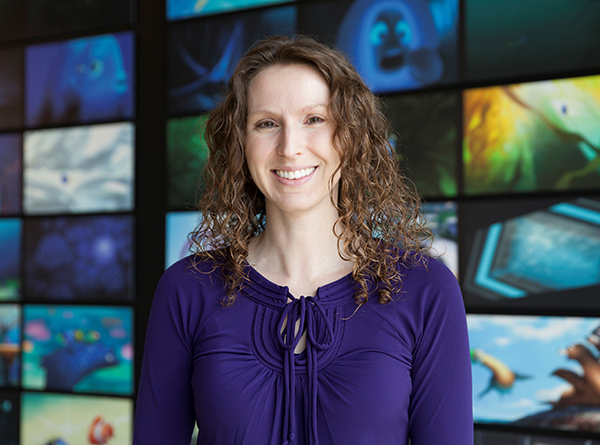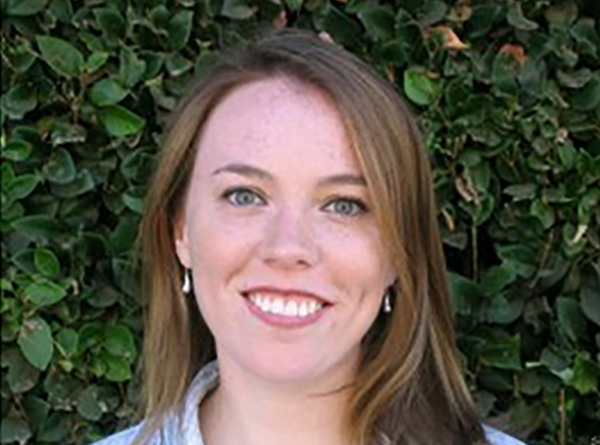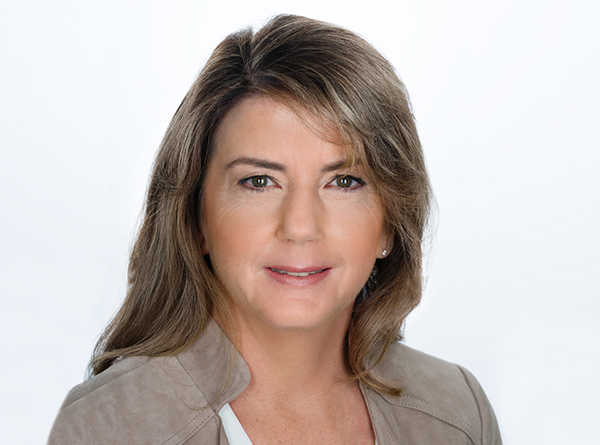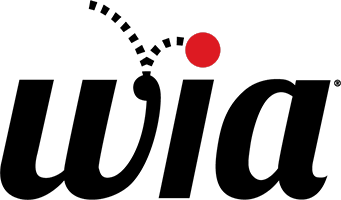Spotlight Stories: Academy of Motion Picture Arts and Sciences’ Scientific & Technical Award Winners
Interview conducted by Tracey Miller-Zarneke
WIA is pleased to see three women in the list of winners for the Scientific and Technical Awards given by the Academy of Motion Pictures Arts and Sciences, more than ever in a single year in the history of this awards program. They join 20 other women who have received Scientific and Technical Awards, starting in 1961. The innovative hair simulation work for which Hayley Iben of Pixar Animation Studios and Kelly Ward Hammel and Maryann Simmons of Walt Disney Animation Studios have been recognized is collaborative, with their teams and efforts described in the announcement of their Academy Awards®:
Hayley Iben, Mark Meyer, John Anderson and Andrew Witkin for the Taz Hair Simulation System
Taz is a robust, predictable and efficient mass-spring hair simulation system with novel formulations of hair shape, bending springs and hair-to-hair collisions. It has enabled Pixar artists to bring to life animated digital characters with a wide variety of stylized hair, from straight to wavy to curly.
Kelly Ward Hammel, Aleka McAdams, Toby Jones, Maryann Simmons and Andy Milne for the Walt Disney Animation Studios Hair Simulation System
The WDAS Hair Simulation System is a robust, predictable, fast and highly art-directable system built on the mathematics of discrete elastic rods. This has provided Disney artists the flexibility to manipulate hair in hyper-realistic ways to create the strong silhouettes required for character animation and has enabled a wide range of complex hairstyles in animated feature films.
WIA reached out to Hayley Iben, Kelly Ward Hammel and Maryann Simmons to learn more about their inspiring careers and achievements.
Congratulations on your award! Tell us what the path to getting there entailed how many years working on the project, collaboration involved, e.g., and how you felt hearing about this honor.
Hayley Iben: Pixar’s Taz Hair Simulation System began in 2009 as a research project to simulate curly hair for the heroine Merida for Pixar’s Brave as well as support the variety of hairstyles on that film. I joined the Taz team of Andrew Witkin, John Anderson and Mark Meyer in the fall of 2010 when an opening became available. We focused on making the software ready for the film’s production, quickly becoming my primary responsibility by addressing stability, look development needs, and numerous feature requests. After this film was released in 2012, I have been continually evolving Taz to meet the artistic challenges of new hairstyles of Pixar’s films. I am deeply honored and thrilled that the Academy selected the Taz Hair Simulation System team for a Technical Achievement Award.
Maryann Simmons: I am a Senior Staff Software Engineer at Walt Disney Animation Studios, and am currently the technical lead of the developers who work on our in-house hair and cloth software tool set. I have been developing tools for artists at the studio for the last 17 years. Work on our hair simulation system started around 2005, and in addition to the other WDAS Sci Tech recipients, Kelly Ward Hammel, Andy Milne, Aleka McAdams, and Toby Jones, many people have contributed to its evolution over the years. This includes developers from Production Technology and Technical Director departments and the artists that we collaborate with every day. Much of my focus has been on helping provide means for the artists to art-direct the simulation and craft the performance.
Kelly Ward Hammel: It was very exciting to hear about the award! It’s taken several years and a lot of work for the whole team to get here. I, personally, worked on the hair simulation system for Walt Disney Animation Studios for about 9 years. There were 5 of us who contributed to this project as developers over the course of several years. But there were many, many more artists and technicians who contributed to the ideas and workflow of our hair simulator as a whole. I previously spent 5 years in graduate school at the University of North Carolina at Chapel Hill researching hair simulation for my Ph.D. thesis. This award has been wonderful recognition to mark many years of hard work by so many!
Let’s go back in time a bit now: tell us about the earliest moment in your life when you realized you wanted to work in the field of animation.
Iben: I always loved cartoons as a child and would watch them with my family. My favorite films were the hand animated Walt Disney films and I was amazed by Pixar’s Toy Story when I first saw it in the theater. I think it was that moment that I realized that I could use my skills with computers to create animation and I wanted to learn more about it in college.
Simmons: I studied Computer Science at U.C. Berkeley as an undergrad and at that time Computer Graphics really appealed to me with the combination of visual aspects with disciplines such as math and physics. I started working with the Computer Graphics group at Cal as an undergrad, and then continued on to get my Masters and PhD. I have been really lucky to have an amazing set of mentors and colleagues along the way. From my academic time, my research advisors and many of my peers served as inspirations to me for who I could be as an engineer and what I could do with this field. At Disney, I have continued to have the support of many amazing colleagues over the years especially as I have grown into different roles. I first remember being exposed to animation production as a focus area for 3D Computer Graphics seeing the early Pixar films and learning more about how technology is used in production from engineers at Pixar and Disney. The CG animation production environment was very appealing because of the opportunity to work closely with artists to develop tools that help them create what ends up on the final film frames and I was fortunate to get a position at WDAS in 2004.
Ward Hammel: I had always been interested in movies as a child though it had not occurred to me that I could work in the field as I always gravitated towards studying math and science in school. In college while I was majoring in physics and computer science, it seemed like a natural next step to combine these two areas to pursue working on physically-based simulation in computer graphics. I started researching hair simulation in graduate school at the University of North Carolina at Chapel Hill. After I graduated, I came to work for Walt Disney Animation Studios, where I primarily worked on hair simulation tools.
Did your parents/family encourage you in your pursuit of art as a career? If so, how? If not, how did you move forward in your pursuit?
Iben: Absolutely, my parents always supported my career choices. I love problem solving and computers, so it was natural for me to use my passions to study computer science in college. When I decided to continue my education in graduate school to study computer graphics at UC Berkeley, my dad helped me move across the country. They are extremely proud of the work that I have done in this industry and I am grateful for their support.
Ward Hammel: My family has always been very encouraging of me to pursue my interests. They loved that I was able to find a way to combine science and art. They’ve always been first in line to see whatever movie was coming out with my contributions in it!
Who were/are your mentors, inside or outside of animation? How have they affected you?
Iben: I have had mentors at various stages of my education and career. When I started an internship at Pixar Animation Studios, I was fortunate to have Andrew Witkin as my mentor in the research team. When I was a new lead software engineer, I had the exciting opportunity to be mentored by Ed Catmull as part of a leadership program. Each of my mentors have given perspective and advice at that stage in my career, growing the area that was under personal development. I also have many unofficial mentors as colleagues and friends whom I solicit input from, continuing to grow my personal skills.
Have you ever served as a mentor? If so, how has being on that side of the equation helped you?
Iben: Yes, I’ve had the opportunity to be a mentor as well as offer advice without an official mentor-mentee relationship. I believe that sharing my career path and personal story is a way to support and encourage women to either enter or continue in the computer graphics field, as well as offering advice in their specific questions.
What, if any, adversities have you faced in your career or life in general, and how did they shape the leader you are today?
Iben: I believe that adversities are part of everyday life and I’ve certainly had a few. I feel that the largest challenge I have faced was completely unexpected and occurred during a high point of my career. After Pixar’s Brave was released and I was pregnant with my child, I had the opportunity to switch from a research and engineering position to leading the simulation technology team. We had successfully deployed Taz for the movie and was excited by the opportunity and wary at the timing with my upcoming family change, but I decided to apply for and then accept the leadership position. We planned that I would start my new role after I returned from maternity leave.
A month after my baby was born, I had a severe stroke. It was a terrifying experience for myself and my family, leaving me with the loss of most speech abilities. I could think of what I wanted to say, but it was a struggle to form words. I also struggled with everyday sounds seeming so loud that I couldn’t be in public places for much time. With the injury also came extreme fatigue that most people really couldn’t understand because it wasn’t an injury that could be seen. It was absolutely devastating.
It took months of speech therapy to be able to speak fluently again, and many months more to be able to be in environments with many sounds. I had help from my close family, but the progress felt so slow. But I was determined to get back to my career that had been put on hold due to my illness. My employer, Pixar Animation Studios, was incredibly supportive as I slowly transitioned back to work under the guidance of my doctor. It was the kindness and support of my lead, manager, and close colleagues that really helped me return to work and to my new role leading the simulation technology team. I was motivated and energized by my work and the work of my team.
My leadership started with overcoming this adversity and it has given me perspective for the scale of problems as they are encountered at work as well as striking a work-life balance. I also recognize that I cannot achieve everything by myself, so effectively delegating is essential as a leader. I also feel that teams can provide a support structure for their members, so balancing the work across the team is crucial to being successful as a group. Although my illness was difficult, I learned about my own strengths and weaknesses, shaping the leader that I am today.
Why is an organization like WIA important?
Iben: Organizations that support women are essential for attracting and keeping women in the industry. They provide a resource for those interested in the industry, providing information, support, and networking opportunities.
How has the status of women in our industry shifted over the course of your career? How has this affected your career path, if at all?
Simmons: Over my career at the studio, I have seen growth in the number of women in artistic, technology, and leadership roles. There is more work to be done fostering diversity at all levels. I find some of the outreach programs I have been able to be involved at the studio very rewarding and inspiring to see how we can make an impact. I am particularly fond of the Girls who Code program where high school Junior and Senior girls are have the opportunity to take part in an immersive computer science education program. WDAS participates in a variety of forms with onsite demos for the girls, as well as mentoring and graduation events. Over the last few years, we have seen girls who participated in the program go on to Computer Science degrees at various universities, and even come back to serve as mentors for subsequent summers. Internal to Disney, CODE Rosie gives opportunities to women employees in non-Tech roles to receive training to become engineers. The Grace Hopper Celebration of Women in Computing conference has been another great opportunity to connect with female engineers who might be interested in pursuing a future in animation, at the intern or professional level.
What do you believe will encourage women to enter the creative field and seek to become leaders in such an industry?
Iben: I hope that by sharing personal experiences through panels or talks at conferences we can inspire more women to enter a creative industry such as computer graphics. Once in the industry, I feel that company groups that support women help with retention as it can give a sense of community. I also think that giving access to mentoring programs or leadership classes could further improve the chances for women to seek out leadership positions within a company.
Simmons: I think outreach is one key path to encouraging more diversity in animation. I was not aware about how technology was used in animation before seeing some talks from Pixar, and it was not until I was at Disney that I could see the full breadth of technology applications. All these years later, when we give talks or engage in other outreach, that is still one of the more common refrains- surprise at the wide variety of technology roles that go into our filmmaking. Visibility coupled with mentoring, intern and trainee opportunities is one way to help open up the path.
What advice do you have for young people looking at animation or other artistic industries as their career field?
Iben: If you are interested in a career area, I’d suggest that you learn more about it to see what you find most exciting. There are many resources online that are available to explore, such as “Pixar in a Box” through Khan Academy. If you are a student, I suggest that you take relevant classes and explore internship opportunities so that you can learn more about that industry. Another option is to consider going to conferences related to the industry, such as the ACM SIGGRAPH conference for computer graphics.
Ward Hammel: Animation involves people with a variety of different talents and interests. If you love the art form, the storytelling, the problem-solving or the process, there are a myriad of important departments that contribute to these films. I would encourage people to explore the different roles involved in animation to find something you are passionate about doing.
Tune in to watch the awards as they are presented in a virtual ceremony on Saturday, February 13, 2021, available on the web at: https://www.oscars.org/sci-tech/ceremonies/2020 starting at 1 p.m. PST that day.
Wishing Hayley, Kelly, Maryann and their colleagues continued innovative work and success in our industry!



